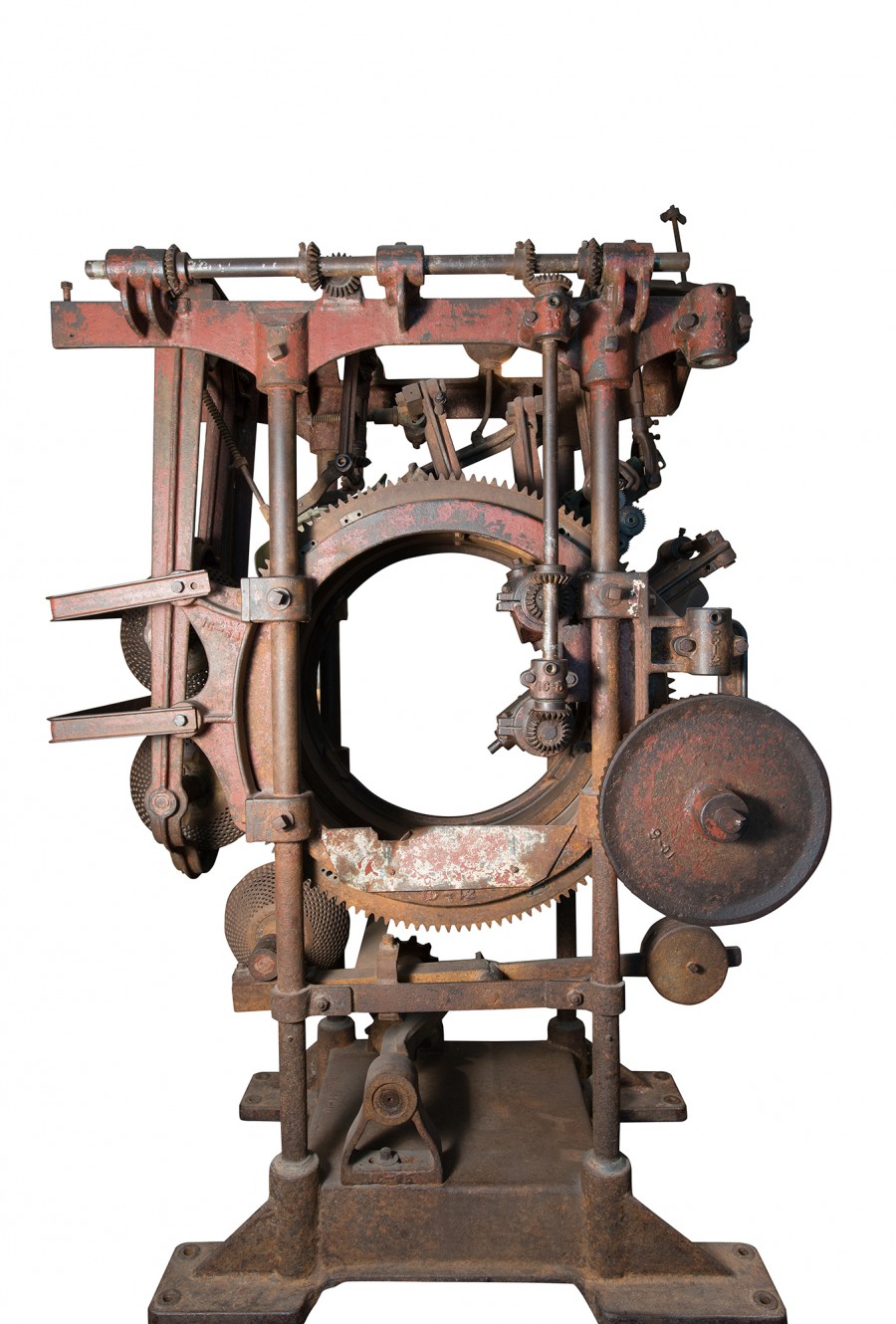Fish butchering machine
- Date:
- early 20th century
- Record:
- RBCM 965.681.1
- Materials:
- steel
Salmon fishing and canning was a major industry in British Columbia in the late nineteenth century and early decades of the twentieth century. A diverse workforce, including men of First Nations, Chinese, Japanese and European descent, and women of mainly First Nations and European descent, attended to the canning line process, but for the most part were racially segregated. The first task in the industry’s canning line process was also one of the dirtiest – to butcher the fish, remove the fish head and fin, slice open the belly and clean out the guts and blood. Chinese workers were often the ones taking up this difficult first task in the early days.
This wheel-like machine was invented in 1903, and could butcher and clean more than one salmon per second. During that time, the word “Chink” was a derogatory term reflecting the prevalent racial discrimination against the Chinese immigrants, and this machine that replaced the Chinese workers was known as the “Iron Chink.”
